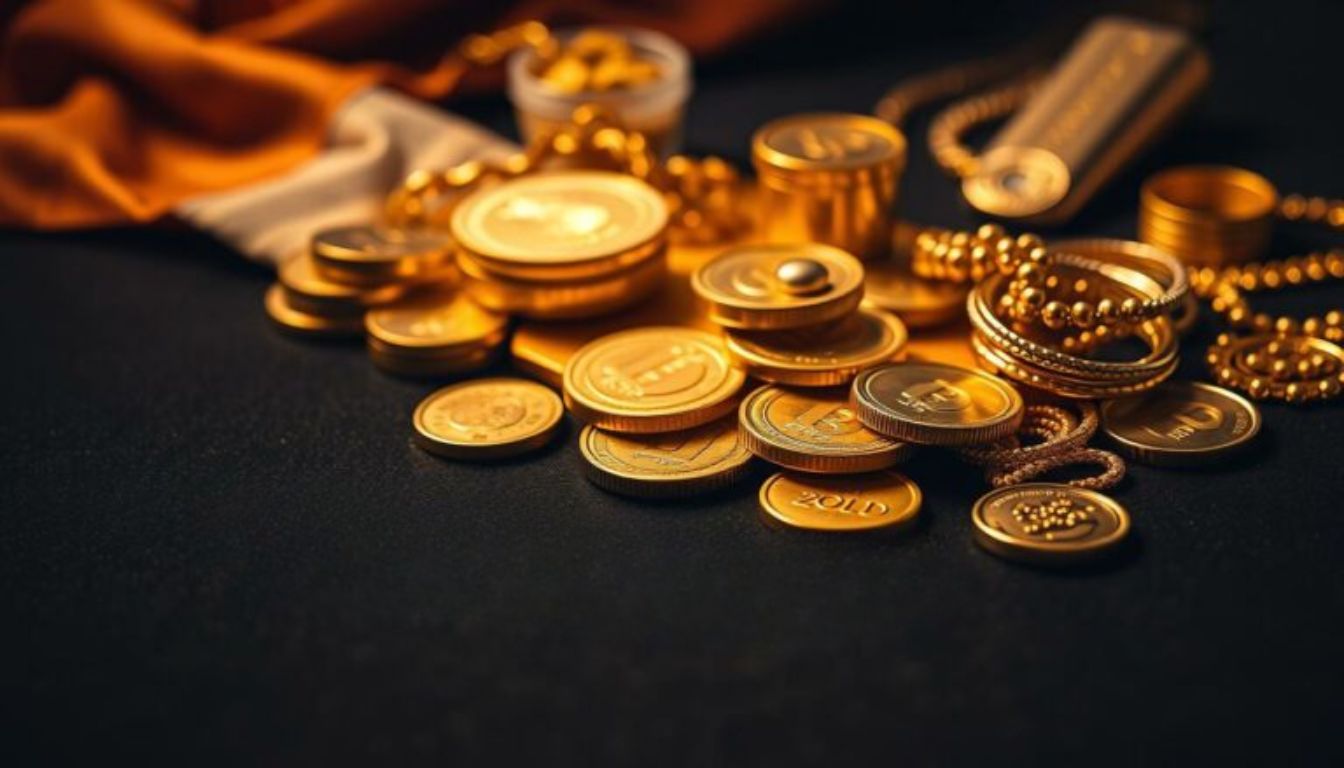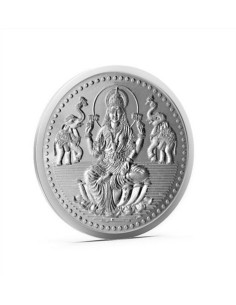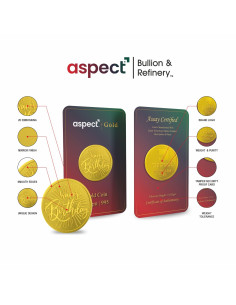Exclusive Deals & Trending Items


Kundan Ganesha Gold Bar Of 2 Grams + Kalpataru Gold Bar Of 1 Grams 24 Karat in 999.9 Purity COMBO SET
Shop NowGold is more than just a metal in India. It’s tied to traditions, wealth, and smart financial moves. With over 25,000 tons of gold in homes, it stands for heritage and safety against tough times. As ICICI Bank predicts prices near ₹90,000 per 10 grams by mid-2025, looking into gold investment options and precious metals investment opportunities is key. This piece explains why gold is still India’s go-to choice.
Key Takeaways
- Gold’s cultural roots and financial resilience drive its popularity across generations.
- RBI’s 72.6-tonne gold purchase in 2024 highlights its role in economic stability.
- Gold ETFs saw a 59% surge, blending tradition with modern investment tools.
- Over 25,000 tons of gold held by families show deep-rooted trust in its value.
- Gold’s 13.5% annual growth over 20 years proves its long-term reliability.
The Cultural Significance of Gold in Indian Society
Gold is more than a metal in India; it’s a part of everyday life and tradition. It’s valued during weddings and festivals, carrying deep emotional and spiritual meaning. For many families, physical gold investment is not just about wealth. It’s a way to connect with their past and present.


Gold’s Role in Indian Traditions and Ceremonies
Gold is deeply rooted in Indian traditions. Over 96% of Indians give gold to temples, even when prices go up, seeing it as sacred. At weddings, 82% see heirloom jewelry as family treasures, often passed down as best gold investments.
Modern designs may evolve, but the tradition of gifting gold at births, marriages, and festivals remains. These rituals make physical gold investment a cultural duty.
Historical Importance of Gold in the Indian Economy
“Gold is the people’s currency.”
Gold has been a form of currency for centuries, even in empires like the Mauryas and Mughals. Today, it acts as a safeguard during economic downturns. During colonial rule and after independence, households used gold reserves to get through tough times.
This history influences today’s gold investment strategies. Still, 86% trust gold more than paper assets.
How Gold Became a Symbol of Prosperity and Security
- 78% see gold as a legacy, with 72% believing it brings luck when given as a gift.
- As “Streedhan,” gold ensures women’s financial security, even in urban homes.
- Rising prices haven’t changed tradition: 90% prefer heirlooms over modern items.
Its lasting appeal is in its dual nature—it’s both a gold investment option and a cultural treasure. Whether through ETFs or jewelry, this legacy influences today’s choices.
Economic Factors Driving Gold Investment in India
When looking at gold investment strategies, keeping the economy stable is key. High inflation and currency changes make gold a safe choice. In 2024, gold prices jumped 21%, beating stocks and bonds for many.


In India, gold demand is linked to the monsoon season. Bad rains lead to more gold buying as farmers use their earnings for gold. The strength of the U.S. dollar also affects import costs, influencing prices at home.
| Asset Class | 3-Year Returns |
|---|---|
| Gold | 17% |
| Sensex | 11.6% |
Adding 10-20% gold to equity portfolios improves returns without increasing volatility.
PrimeInvestor points out gold’s role in managing risks. With central banks buying more gold, global trends match local preferences.
Smart gold investment companies now offer ETFs and digital platforms. This makes it simpler to follow global prices. Even with tax changes like GST, gold is still a top choice for protecting wealth in uncertain times. Gold’s role in both tradition and strategy keeps it important in Indian finance.
Popular Gold Investment Options for Indian Investors
Gold is more than just a tradition in India. It offers a range of investment choices. Let’s explore the best gold investments for your goals.
| Investment Type | Key Features | Advantages | Considerations |
|---|---|---|---|
| Physical Gold | Jewelry, coins, bars | Cultural relevance, liquidity | Storage costs, making charges |
| Gold ETFs | Dematerialized units traded on exchanges | Lower entry cost, no storage | Market-linked risks |
| Sovereign Gold Bonds | Government-backed with interest | Tax benefits, sovereign guarantee | Fixed tenure constraints |
| Digital Gold | Online platforms like Paytm Gold | 24/7 access, fractional ownership | Dependence on platforms |
Physical Gold: Jewelry, Coins, and Bars
Investing in physical gold is a classic choice. Jewelry is loved but costs more due to making charges. Coins and bars from gold investment companies like MMTC PAMP are pure.
Malabar Gold’s Smart Buy Plan offers free insurance. Always check for BIS hallmarking to avoid scams.
Gold ETFs and Mutual Funds
Gold ETFs track gold prices closely. In 2024-25, they saw ₹14,948 crore inflows. Mutual funds invest in gold stocks or ETFs.
Look at the expense ratios. Lower fees mean more returns.
Sovereign Gold Bonds
Sovereign Gold Bonds offer 2.5% annual interest. Prices are linked to gold rates. Since 2021, the Gold Monetisation Scheme has accepted 21 tonnes.
It’s great for those who want to play it safe.
Digital Gold Platforms
Apps like Zerodha’s Gold Investment let you buy small amounts online. These gold investment strategies use real 24k gold. Platforms like Amazon Karigar even offer redemption for jewelry crafting.
Comparing Gold with Other Traditional Investment Avenues
Choosing between gold investment options and other assets needs a clear view of their benefits and risks. We’ll compare gold with real estate, fixed deposits, and stocks. This will help you find the right choice for your goals.
Gold vs. Real Estate
| Factor | Gold | Real Estate |
|---|---|---|
| Liquidity | High (can sell anytime) | Low (sales take months) |
| Average Annual Return (2010-2025) | 17.01% CAGR | Varies by region, often 8-12% in top cities |
| Costs | Making charges (3-5%), GST | Broker fees, maintenance costs |
Gold offers quick access to funds, unlike real estate. But real estate can earn rental income. Gold relies on price increases.
Gold vs. Fixed Deposits
- FDs guarantee principal but often underperform inflation
- Gold’s historical returns (12% annually) beat FD post-tax returns
- Gold ETFs now hold ₹55,677 crore AUM, tripling in 2024-25
Fixed deposits are safer but may not offer the best returns. Gold’s gold investment strategies promise higher growth over time.
Gold vs. Stock Market
Equities did better than gold in 2023. But gold performed well during crises like 2008 and 2020. Recent data shows gold stocks and ETFs gave 10.80% over 15 years. Stocks can rise quickly but also fall.
Young investors prefer stocks (62% choose them), but many keep gold for stability. Use this info to mix best gold investments with other options based on your risk level and time frame.
The Unique Benefits of Investing in Gold
Gold investment options like physical gold, ETFs, and sovereign bonds offer unmatched advantages for Indian investors. When how to invest in gold is your focus, consider its proven track record. Over the last five years, gold delivered an 18% average annual return, outperforming the Nifty 50. This resilience makes it a powerful shield against inflation, safeguarding your wealth during economic turbulence.
- Inflation Hedge: Gold retains value even as prices rise, making it a reliable store of wealth.
- Global Liquidity: Convertible anywhere, it’s ideal for India’s globally mobile population.
- Portfolio Diversifier: Adding gold reduces risk exposure compared to stock or real estate-only portfolios.
“Gold’s stability during geopolitical shifts ensures it remains a timeless asset class.”
Sovereign Gold Bonds from the Reserve Bank of India provide fixed returns while avoiding storage hassles. Its recognized purity and cultural value also mean families can pass it across generations with ease. With scams a risk, choose certified gold investment options like RBI-backed bonds or regulated ETFs. Whether you’re buying jewelry during wedding seasons or diversifying digitally, gold’s adaptability makes it a cornerstone of smart financial planning.
Understanding the Risks and Limitations of Gold Investments
Gold is a key part of wealth management in India, but every gold investment strategy has risks. Price changes, storage costs, and how easy it is to sell can impact your returns. For example, in 2013, gold prices dropped 25% when interest rates went up, showing how volatile it can be.
Emotional decisions based on fear during market downturns can lead to poor investment choices.
Price Volatility Considerations
Gold prices can change due to global issues like inflation or political events. In 2013, higher interest rates caused a big drop. Physical gold investment doesn’t pay dividends, so you make money only when you sell it. ETFs or Sovereign Gold Bonds might have less price variation than owning physical gold.
Storage and Security Challenges
- Physical gold needs safe storage—like home safes, bank lockers, or vaults—which adds costs.
- Home insurance usually doesn’t cover precious metals, so you might need special policies.
- There are also making charges (2–5%) and GST (3%) to consider when selling.
Liquidity Issues with Certain Gold Assets
Digital gold platforms have rules like 5-year storage periods and fees after that. Selling digital gold might need to follow specific times. Physical items like jewelry often sell for less because of refining costs.
When deciding how to invest in gold, you can choose digital or physical. Liquidity risks differ. Sovereign Gold Bonds have lock-in periods, while ETFs let you sell faster. Always check the exit rules before picking gold investment options.
How to Invest in Gold: A Beginner’s Guide
Starting your gold investment journey means knowing your goals and options. Follow these steps to match gold investment strategies with your financial goals.
Determining Your Investment Goals
What do you want from gold? Do you want to keep wealth safe, find precious metals investment opportunities, or make quick money? Think about how long you plan to hold onto gold. Do you need it for emergencies or for quick trades? Also, consider how much you can afford to lose and how often you want to sell.
- Are you saving for a big event or looking for steady income?
- Do you like to manage your investments yourself or prefer automated options?
Choosing the Right Form of Gold Investment
| Option | Minimum Investment | Annual Costs | Liquidity | Suitability |
|---|---|---|---|---|
| Physical Gold | ₹6,000 (1gm coin) | 3%-4% storage + 3% GST | Varies by market demand | Traditional savers |
| Gold ETFs | ₹50-₹100 | 0.5%-1% expense ratio | High | Beginners |
| Digital Gold | ₹1 | 6% spread + 3% GST | Immediate | Small investors |
Building a Diversified Gold Portfolio
Mix physical gold investment with paper-based options. Here’s how:
- Put 5%-10% of your portfolio in gold to balance risks.
- Use physical coins and ETFs together for both real and easy-to-trade options.
- Think about Sovereign Gold Bonds for a fixed return, but remember they lock up for 8 years.
For long-term growth, add gold to silver or platinum through multi-metal funds. Check your mix often to keep up with market changes.
Tax Implications of Gold Investments in India
When you look into gold investment options, knowing the tax rules is crucial. Different gold types, like bars, ETFs, or Sovereign Gold Bonds (SGBs), have different tax rules. Here’s a simple guide to help you invest in gold wisely and follow the law.
- Physical Gold: Selling after 3 years means a 20.8% long-term capital gains (LTCG) tax. Gains in less than 36 months are taxed based on your income.
- Sovereign Gold Bonds (SGBs): No capital gains tax if held until maturity (8 years). Early sales have LTCG after 3 years. Interest is tax-free.
- Gold ETFs & Digital Gold: LTCG is taxed at 20.8%, while short-term gains are taxed based on your income.
More tax rules to remember:
- Buying physical gold incurs a 3% GST. TDS of 1% is applied for purchases over ₹1 lakh.
- Gold gifts from family are tax-free. But, gifts from non-relatives over ₹50,000 are taxed.
- NRI investors can’t buy SGBs. But, other gold investment options like ETFs are available, with TDS on redemptions.
Keep records of when you bought gold and how much it cost. This helps you calculate gains correctly. Talking to a tax advisor can help you meet your financial goals. Small rules, like holding limits (e.g., 500g for married women), can also save you money.
Best Practices for Gold Investment Strategies
Mastering gold investment strategies is about mixing old ways with new ones. Let’s look at three effective methods to boost returns and cut risks.
Dollar-Cost Averaging with Gold
Use gold investment strategies like dollar-cost averaging to fight price changes. Instead of buying all at once, invest a set amount regularly:
- Choose gold saving schemes from jewelers for monthly payments
- Set up SIPs in gold ETFs or mutual funds
- Track price trends using digital platforms
For example, investing ₹2,000 monthly can help you avoid big losses from price swings.
Seasonal Buying Considerations
Timing is key. Historical data shows:
| Season | Action | Rationale |
|---|---|---|
| Diwali/Akshaya Tritiya | Plan purchases 2-3 months in advance | Avoid peak pricing by buying pre-festival |
| Q4 | Monitor global ETF flows | Lower demand in non-festival months can offer discounts |
Portfolio Allocation Recommendations
A blockquote>Experts recommend allocating 5–10% of your portfolio to gold to balance risks. Here’s how to distribute:
| Investor Profile | Gold Allocation | Best Gold Investments |
|---|---|---|
| Conservative | 5-7% | Sovereign Gold Bonds, gold ETFs |
| Aggressive | 8-10% | Digital gold + physical jewelry |
Always think about your risk level and goals when deciding how to invest in gold. Mix precious metals investment opportunities like mutual funds with physical gold.
The Future of Gold Investment in the Digital Era
India’s gold market is changing fast. Paytm Gold and Zerodha are making gold easy to buy, even with small budgets. You can start with just ₹1 and watch your gold grow over time.
These gold investment companies use new tech like blockchain and AI. They keep track of prices and make sure your gold is safe. This turns old gold into something new and techy.
- Start with as little as ₹1 through fractional ownership
- Real-time price updates and 24/7 trading access
- Convert digital holdings to physical gold anytime
| Traditional Gold | Digital Gold |
|---|---|
| High entry cost (₹50,000+) | Start at ₹1 |
| Risk of purity scams | Blockchain-backed authenticity |
| No liquidity unless sold physically | Instant sell/buy via app |
Young people are leading the change. A study found 65% of millennials like digital gold more than jewelry. DigiGold offers safe storage and help anytime you need it.
But, there are still risks like cyber threats and unclear rules. With gold prices at ₹90,000 per 10g, picking the right gold investment options is key. Look for places that are safe, clear, and flexible to protect your money.
“Digital gold’s growth mirrors India’s move toward cashless, tech-driven finance.”
Whether you like apps or bars, the digital world offers new ways to own gold. Keep up with news, start small, and use tech to grow your wealth.
Common Mistakes to Avoid When Investing in Gold
When you look into investing in gold, it’s easy to miss important steps. Mistakes like not checking purity or trying to time the market can hurt your returns. Here are some tips to avoid these costly errors.
“Gold is a long-term hedge, not a short-term gamble.”
- Purity Neglect: The value of physical gold depends on its purity. Look for BIS hallmarking (like 916 or 999) to confirm it’s real. Fake gold or low purity can lower its resale value. Always test gold with acid or electronic testers before buying.
- Hidden Costs: Extra charges for jewelry can increase costs by 10-30%. Choose plain bars or coins (like American Eagles) over fancy jewelry to save money. Always compare prices from different sellers.
- Timing Guesswork: Gold prices can change quickly. In 2013, prices dropped by 25%. Those who sold too early lost out. Instead, focus on regular investments and avoid chasing trends.
To pick the best gold investments, focus on purity, cost, and long-term goals. Diversify with ETFs or sovereign bonds alongside physical gold to manage risks. Remember, gold is a patient investment, not a quick solution.
Expert Insights: Which Gold Investment Options Suit Different Investor Profiles
Financial advisors say to match gold investments with your risk level and goals. For those looking for safety, gold investment companies suggest Sovereign Gold Bonds (SGBs). They offer fixed returns and tax benefits if held until maturity.
“SGBs are great for those who don’t like to take risks,” says Anika Mehta from Mumbai. “They give 2.5% annual returns plus keep up with inflation.”
Young professionals aiming for growth might like ETFs or digital gold. Sites like Zerodha or CoinDCX let you invest small amounts digitally. This way, you can track market prices easily.
Millennials who are tech-savvy can use apps to spread their investments. This way, they can diversify without worrying about high charges.
Family wealth managers often mix physical gold with ETFs. While jewelry is still popular, experts warn about the high costs. For long-term investments, tax-efficient options like ETFs are better. They avoid capital gains taxes when sold.
A study found 58% of cautious investors prefer low-risk products. On the other hand, 54.3% of wealthy women prefer stocks over physical gold. Advisors suggest combining gold ETFs with stocks for a balanced portfolio.
For retirement planning, consider gold IRAs. Although India doesn’t have direct equivalents, sovereign bonds and digital gold serve similar roles.
Start small with digital gold platforms starting at ₹1. Choosing wisely matters: SGBs don’t have capital gains tax, while ETFs and physical gold do. Your decision depends on your capital, time frame, and comfort with technology.
Need advice? Talk to certified financial planners. They can create strategies tailored just for you. Remember, diversifying is crucial—mix gold with other assets for the best results.
Conclusion: Making Gold a Valuable Part of Your Investment Portfolio
Gold is a key part of many Indian families’ financial plans. It offers a way to protect against inflation and economic ups and downs. Today, you can invest in gold through ETFs, bonds, and digital platforms.
Whether you prefer physical jewelry or gold mutual funds, adding gold to your portfolio can safeguard your wealth. Gold has shown its strength during tough times, like the 2008 crisis and the pandemic. It even rose 5.8% in 2008 and 25.1% in 2020 when other investments fell.
Smart investors mix old and new ways to invest in gold. Gold ETFs, for example, are cost-effective and offer quick access to your investment. Sovereign gold bonds and digital platforms provide clear information and purity guarantees. These options are popular in India because they are affordable and easy to use.
When looking into gold investments, match your goals with the right choice. Physical gold holds cultural value, while ETFs are great for those who value convenience. Remember, gold is meant to complement other investments, not replace them.
Stay updated on trends like how monsoon seasons or global events can affect gold prices. Keep an eye on new tools like digital gold apps to refine your strategy.
Gold’s value goes beyond its history; it’s a way to secure your financial future. Whether through traditional jewelry or modern ETFs, adding gold to your portfolio can protect your savings. Start by thinking about your risk tolerance and financial goals. Look into options like Sovereign Gold Bonds or top gold funds to create a balanced investment plan. Gold’s journey from temples to digital wallets shows its flexibility. Let it help you in today’s unpredictable world.




















2 Responses
I found it insightful how the blog connects generational trust in gold with modern investing methods like ETFs. It’s a great reminder that investing doesn’t always have to be either/or—it can be both rooted in tradition and forward-thinking.
Really insightful post! I think the blend of cultural significance and financial security is what makes gold unique in the Indian context. With the rise in Gold ETFs, it’s fascinating to see how tradition is now aligning with more modern, flexible investment tools.